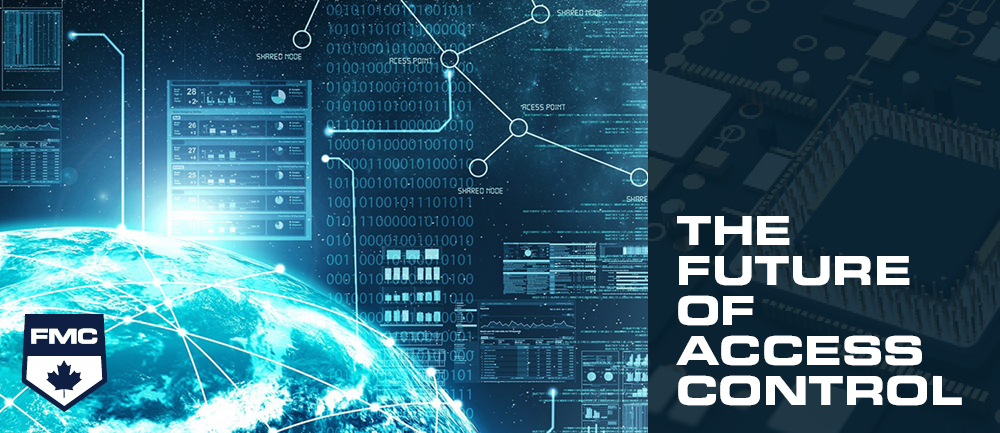The Future of Access Control

Make no mistake, access cards still play a big role in today’s access control market, and there is no indication that they will disappear any time soon. However, advancements in access control technology, paired with changes in consumer demand are causing today’s security integrators to look to the future to address these changes. Here are four areas we are watching as the future of access control develops.
Mobile Credentials
One increasing trend in the access control market is the use of smartphones and Bluetooth technology to provide access credentials. Using mobile credentials eliminates the need to carry a separate card or keyfob, reducing the risk of losing or having the separate credential stolen, as people are often more attached to their cell phones than a card/keyfob.
Accomplishing mobile credentials can be done through near field communication (NFC) technology, allowing NFC-enabled smartphones to communicate with other devices containing the NFC tag.
Biometrics
 Biometrics use a person’s physical characteristics, such as hand features, eye scans, and facial recognition to confirm their identity. This technology is already significantly impacting the access control industry, and it is common to observe the use of fingerprint recognition. In some cases, the industry combines multiple methods of biometric identification and even pairs them with other forms of ID as a duplicate security measure.
Biometrics use a person’s physical characteristics, such as hand features, eye scans, and facial recognition to confirm their identity. This technology is already significantly impacting the access control industry, and it is common to observe the use of fingerprint recognition. In some cases, the industry combines multiple methods of biometric identification and even pairs them with other forms of ID as a duplicate security measure.
Biometrics continues to demonstrate incredible advancements in accuracy and functionality. Read more about the benefits of biometric access control HERE.
Access Control as a Service
Access Control as a Service (ACaaS), is a subscription-based alternative to traditional access control solutions. The use of ACaaS moves data processing and storage off-site, eliminating the need for you to keep an maintain a server at your building. This alternative is proving to be an excellent alternative for the building owner who doesn’t want to, or doesn’t have the infrastructure to keep a server on site, plus, in many scenarios, ACaaS is proving to be a cost-effective access control method. It is also a great tool to keep the software and firmware current at all times.
Enhanced Integrations
Security integrations bring together separate services such as security cameras, access control, and security systems into a single arrangement that works together. There is a concerted effort towards improving these integrations to provide users with improved functionality and user-experience. As an example, integrations with access control could alert emergency personnel in the event of a break in, while simultaneously locking down access to sensitive areas and monitoring movements of staff sill in the building.
Learn More
- How an Access Control System Works
- Benefits of a Biometric Access Control System
- The Benefit and Challenges of using Mobile as Credentials
Contact Us
 For over 30 years, Fire Monitoring of Canada (FMC) has been an industry leader in the monitoring of fire alarm and security systems. If you would like to learn more about how access control can help improve your facility’s security, call us at 1 888 789 FIRE (3473), email fminfo@fire-monitoring.com, or fill out the contact form below.
For over 30 years, Fire Monitoring of Canada (FMC) has been an industry leader in the monitoring of fire alarm and security systems. If you would like to learn more about how access control can help improve your facility’s security, call us at 1 888 789 FIRE (3473), email fminfo@fire-monitoring.com, or fill out the contact form below.